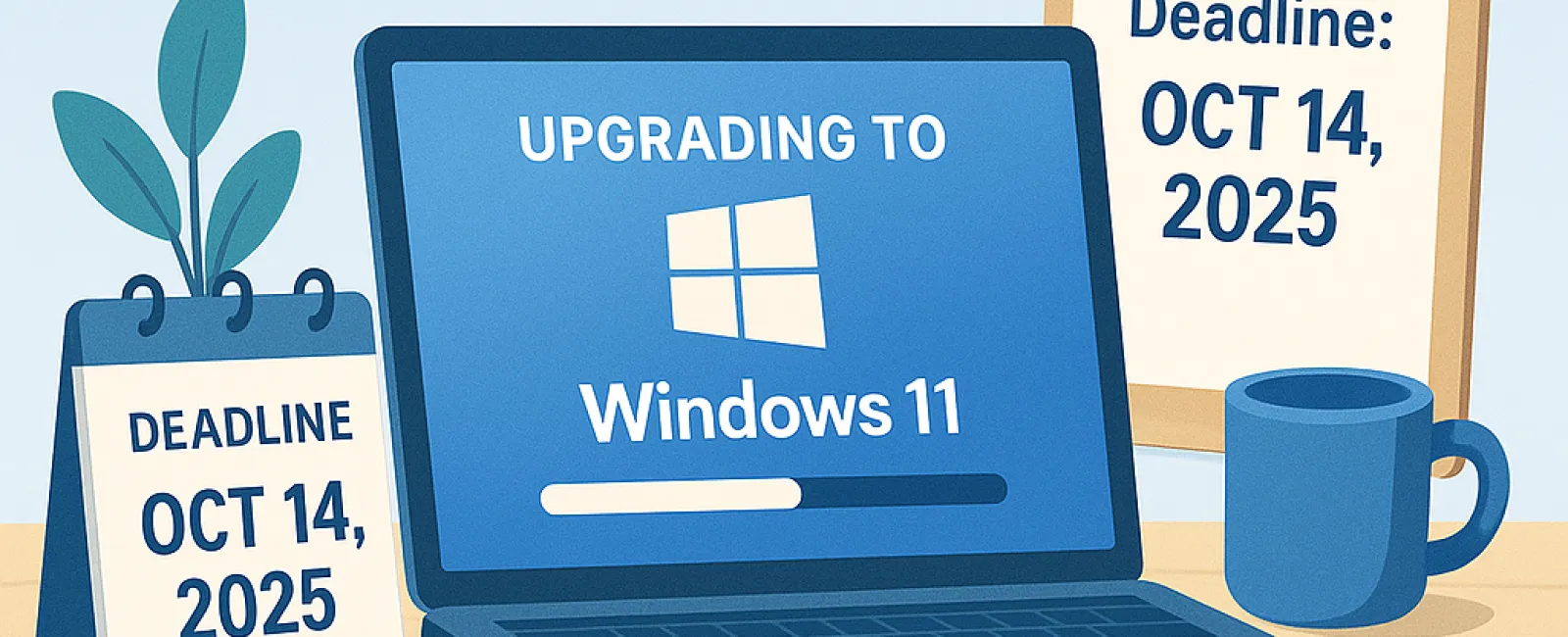June 23, 2025
If your business is still using Windows 10, it's important to act now because time is running out.
Microsoft will stop supporting Windows 10 on October 14, 2025. After that date, there will be no more security updates, bug fixes, or technical assistance.
Business owners need to realize that delaying the upgrade isn't just a future problem—it can have immediate costs.
"We'll Deal With It Later" Is An Expensive Strategy
Upgrading every device in your business might seem like an unnecessary expense, so it's tempting to put it off—until something goes wrong.
Here's what delaying really costs you:
1. You're Operating Without A Safety Net
When Microsoft stops updating Windows 10, new security threats become your problem. Hackers target outdated systems because they're easier to exploit. It's like locking the front door but leaving the windows open. A single security breach could cost you thousands or even jeopardize your entire business.
2. Software And Hardware Compatibility Issues
Many business applications, including accounting software, CRMs, and industry-specific programs, are already phasing out Windows 10 support. If your software crashes during a project or client presentation, the cost can be significant. It's not just software—new printers, peripherals, and security devices may also stop working properly with an outdated operating system.
3. Lost Productivity
Older systems tend to run slower, crash more often, and frustrate employees. Even minor delays add up, reducing efficiency, lowering morale, and hurting your competitive edge. If each employee loses 10 to 15 minutes daily due to technical issues, think about the cumulative cost over a month.
4. Emergency Upgrades Are Always More Expensive
Waiting until your systems fail or your team can't access their work leads to costly emergency measures such as:
- Urgent hardware purchases
- Expensive rush IT services
- Business downtime during replacements
Planning ahead now will save you money and stress later.
5. You're Risking Compliance Violations
If your business handles sensitive information or must comply with regulations like HIPAA or PCI-DSS, using unsupported software can lead to fines or legal issues. Many regulations require current security standards, which Windows 10 won't meet after October 2025.
What Smart Business Owners Are Doing Now
Proactive businesses are preparing ahead of the deadline by:
- Reviewing which devices need replacement
- Simplifying their software and tools
- Strengthening cybersecurity
- Planning their IT budgets wisely for 2025
How To Make The Transition Smooth
We suggest the following steps:
- Conduct a compatibility check to see which machines can upgrade to Windows 11 and which need replacing
- Review your software to ensure essential applications will work on Windows 11 or newer systems
- Budget for new hardware early to avoid supply chain delays
- Work with an IT partner who can manage the entire upgrade process smoothly, minimizing downtime and surprises
Don't Wait Until October To Panic
Waiting until the last minute will cost you more - in
money, stress and missed opportunity. We're helping small businesses make the
upgrade the smart way: planned, smooth and optimized for future growth.
Click here or give us a call at 816-233-3777 to book your FREE 15-Minute Discovery Call and we'll help you identify what needs upgrading, what can stay and how to build a transition plan that won't disrupt your business before the deadline.



